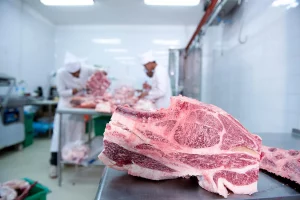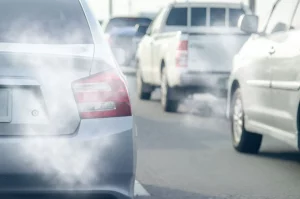Restaurant dining used to be a routine affair, but many now dread the thought of chowing down in a roomful of bare-faced strangers.
So as state-level lockdowns wax and wane, how safe is it to dine at your favorite restaurant?
There’s some risk, but with proper precautions you should be able to enjoy your meal with a reduced risk of exposure to the coronavirus, experts say.
The U.S. Centers for Disease Control and Prevention would prefer that you order takeout or delivery, as that remains the safest way to minimize your exposure to other folks.
But if you’re going stir-crazy and need to get out, your next safest option is to pick a restaurant with an outdoor dining area, said Dr. Leonard Mermel, medical director of epidemiology and infection control at Rhode Island Hospital in Providence.
Everyone has to remove their mask to eat their meal, and if you’re indoors at a poorly ventilated restaurant you’ll be at greater risk of breathing in coronavirus that’s been exhaled by a sick person, Mermel said.
“Outdoors, if someone’s coughing it’s going to be quickly diluted in the body of air outside, let’s say with a light breeze,” Mermel said. “Outdoor eating is generally safer than indoor eating for that reason.”
You also might ask about the restaurant’s sick leave policy and insurance coverage before making a reservation, Mermel added. You’re more likely to be served by a healthy person if the restaurant pays workers to stay home when they’re ill.
“There’s a push/pull of people who say, ‘Oh, I feel a little crummy, I’ve just got a little cough, I’m going to go into work because otherwise I’m not going to get paid.’ That’s a problem when you’re someone who’s going to have contact with a lot of other people, particularly if those people aren’t masked such as people eating in a restaurant,” Mermel said.
Indoors or outdoors, you should make sure that the tables are at least 6 feet apart, the CDC says.
It’s also good to ask beforehand if the servers are wearing masks, and if the masks are medical-grade, Mermel added.
“We in the scientific community believe the vast majority of transmission is respiratory-to-respiratory,” Mermel said. Masks are key to protecting patrons from whatever respiratory germs the servers might have.
For that reason, Mermel is less concerned about all of the objects you might touch in a restaurant.
Restaurants taking appropriate precautions — wiping down menus between uses or using disposable menus, continually disinfecting touch screens and payment devices — should be able to nearly eliminate the risk of contracting COVID-19 via touch, Mermel said.
“If someone hacked away holding a menu in front of their face and the droplets from their cough got all over the menu, it was not cleaned, it was taken out of that person’s hands and then given to someone at the next table and that person touched it and then touched their mouth or their eyes or their nose, yes, it’s possible in that case transmission could occur,” Mermel said.
The CDC also recommends throwaway utensils, but Mermel said if your plates and cutlery “go through a hot dishwasher, I’m not concerned. I’m more concerned about menus or other things that should be routinely cleaned between patrons.”
Finally, don’t forget your role in preventing spread of COVID-19. Wear your mask when you’re not eating, maintain social distancing throughout the restaurant, and if you’re dining with others make sure you’re sitting away from people who aren’t in your household, the CDC recommends.
More information
The U.S. Centers for Disease Control and Prevention has more about social activities and COVID-19.
Source: HealthDay
Copyright © 2025 HealthDay. All rights reserved.

















